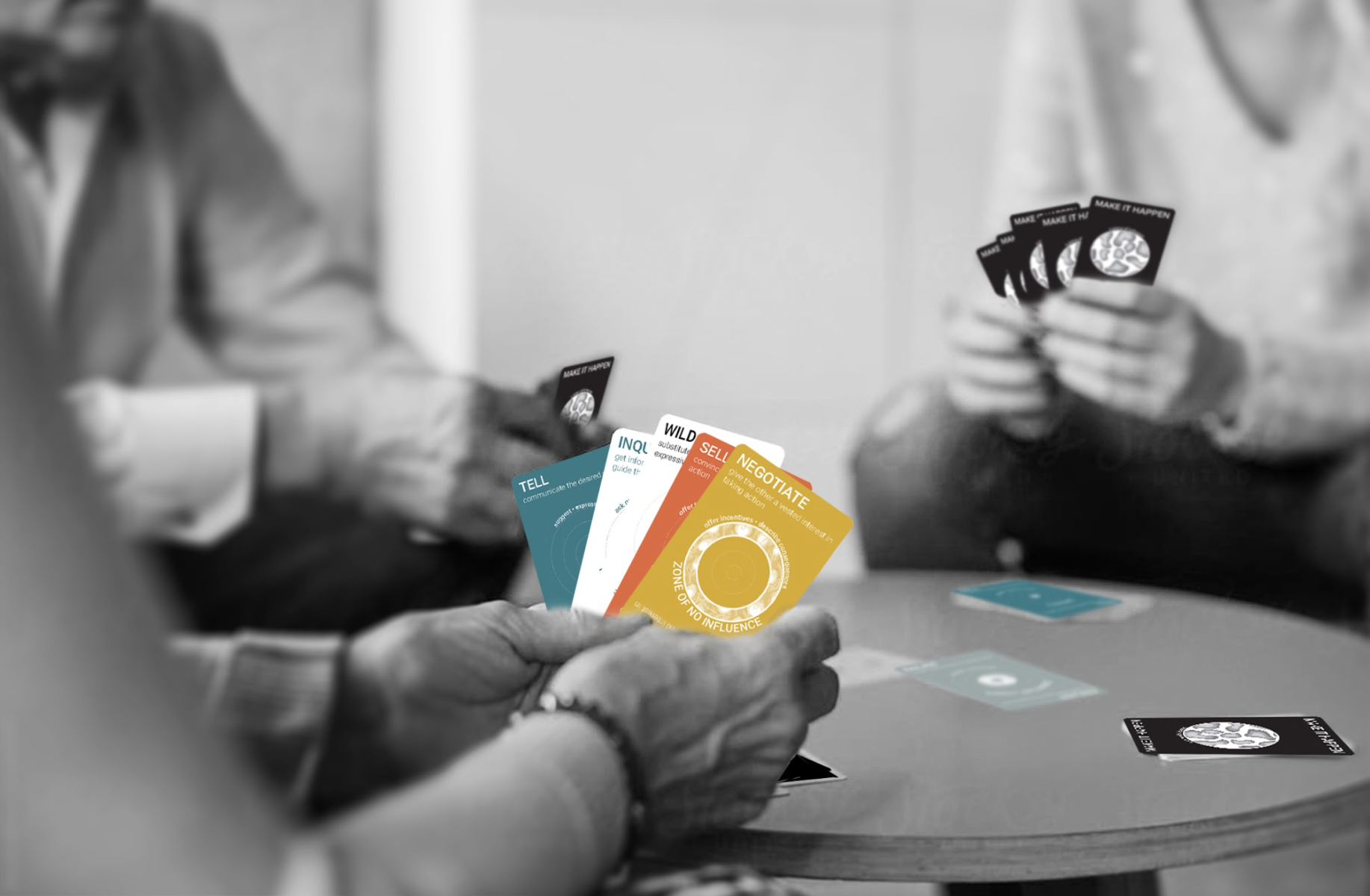
Make it Happen
A card game of influence, based on the book Exercising Influence by B. Kim Barnes
Problem Statement
The objective of this project “book report” is to relay the major takeaways and ideas, and key terminology in a novel format.
Objective
This book report of Exercising Influence: A Guide for Making Things Happen at Work, at Home, and in Your Community by B. Kim Barnes has been formatted as a card game. To reflect the nuance of learning influence in real-world scenarios, this game emphasizes building relationships and crafting interactions between groups of players. To win influence, a player must gain the most points by the end of the same. A player gets points for collecting pairs and sets of matching cards on the table
Similar games: Set, Uno, Go-Fish, Gin Rummy
User
For the purposes of this project, the following user persona Nancy Dickenson has been provided for context and to guide design decisions.
Nancy Dickenson
Nany Dickenson is a professor of leadership and management at Bentley University. She has taught for many years and has read many many papers. This year, she hopes to see what her students have learned in a new format that is representative and accurate to the meaning of the assigned readings.
Apart from serving as a book report, this game is intended for office teams to learn positive and productive ways to communicate and to learn how to influence in professional and personal settings. Offering office teams an opportunity to play this game together, allows colleagues to discuss tactics to gain and maneuver influence and power in a low-stakes setting.
Methods
Requirements & Constraints
Task Analysis
Persona Building
Tools
Analog Sketching
Illustrator
Indesign
Photoshop
A game for colleagues and friends.
learn and share tactics to gain influence in the workplace
discuss influence and power within your community
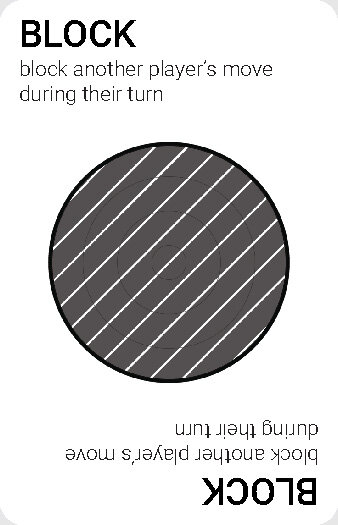
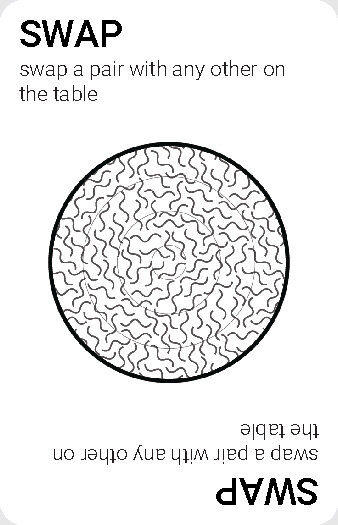
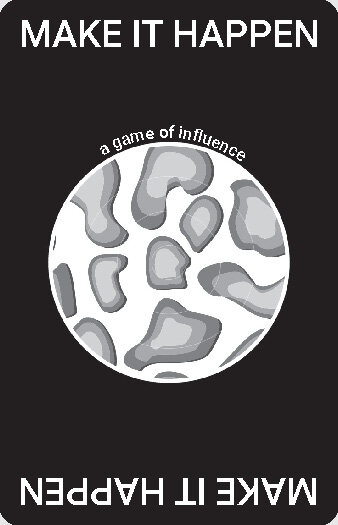
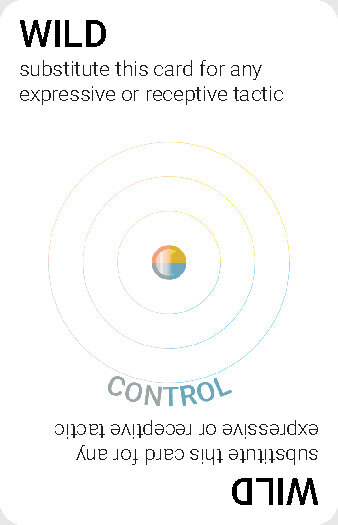
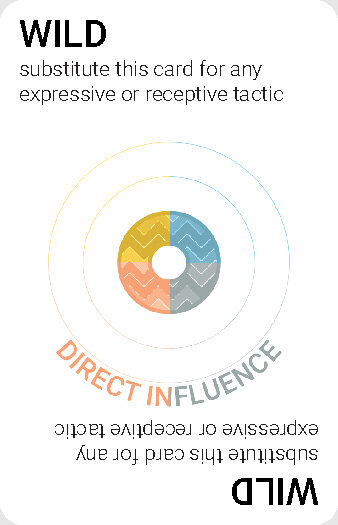
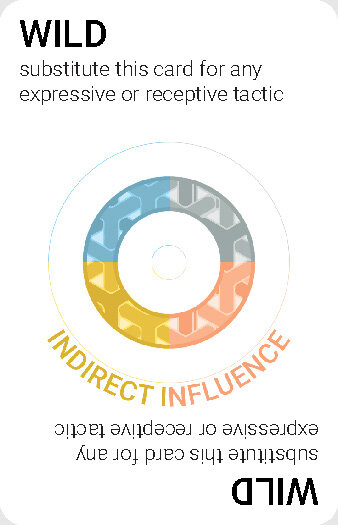
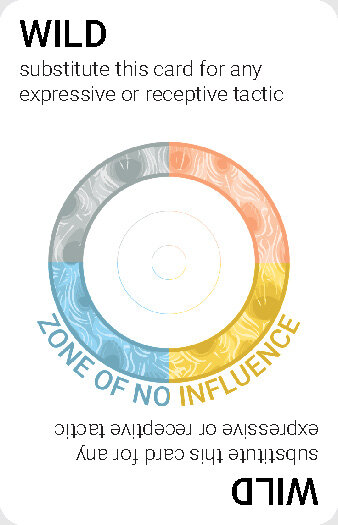
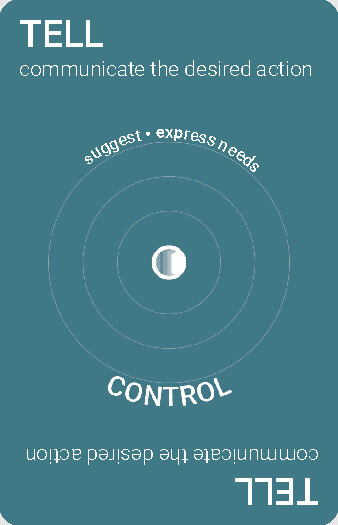
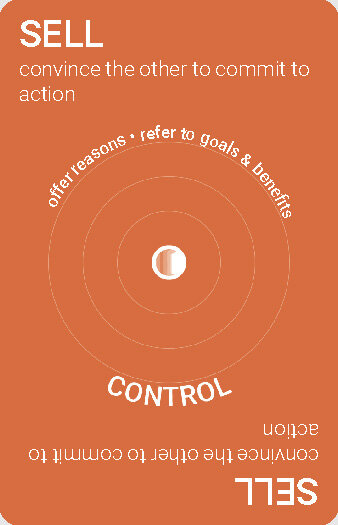
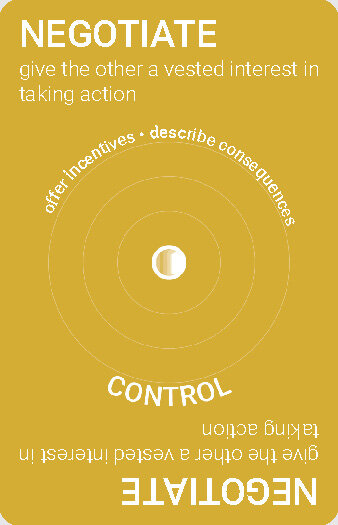
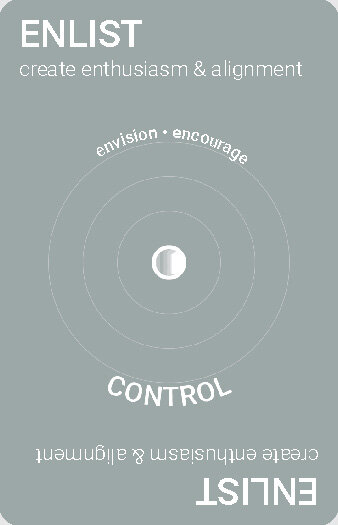
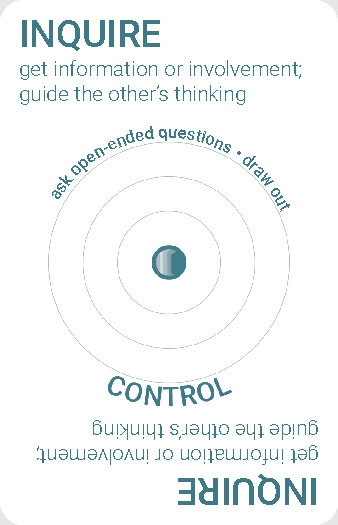
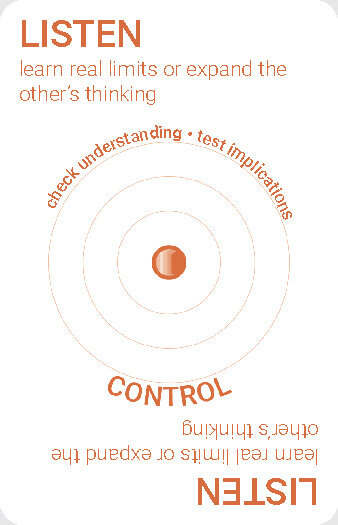
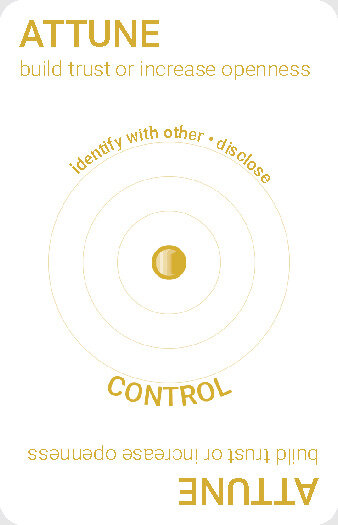
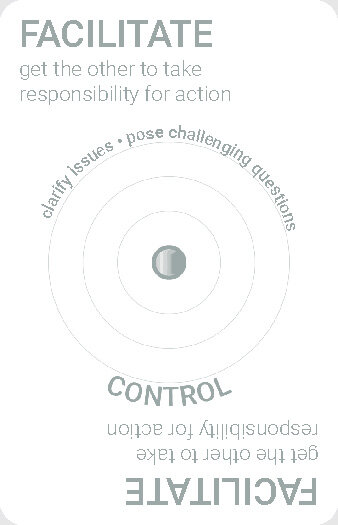
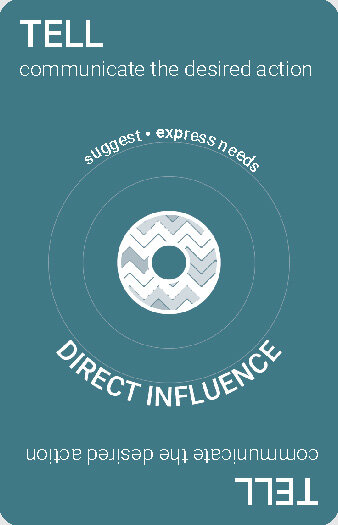
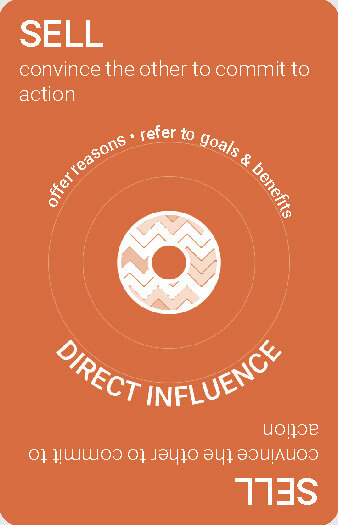

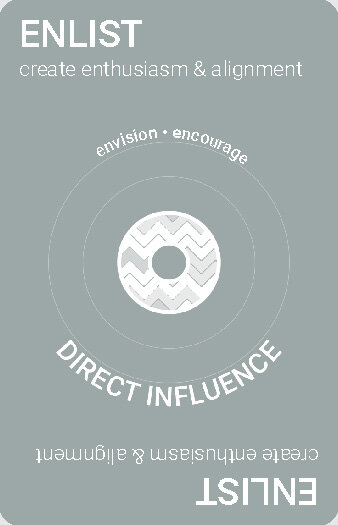
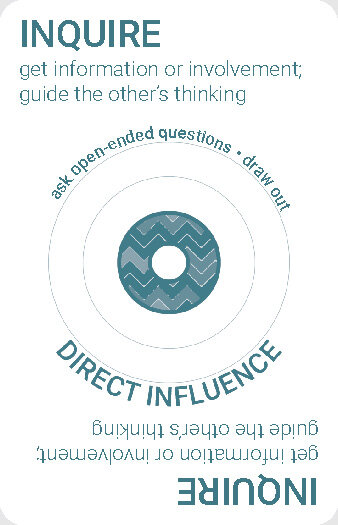
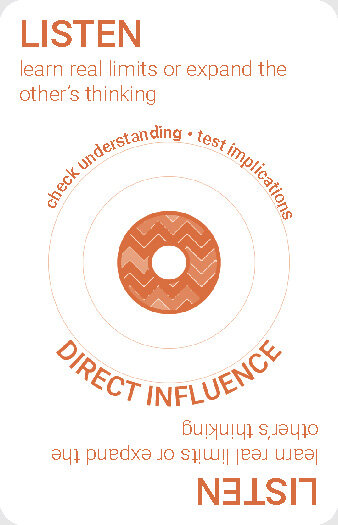
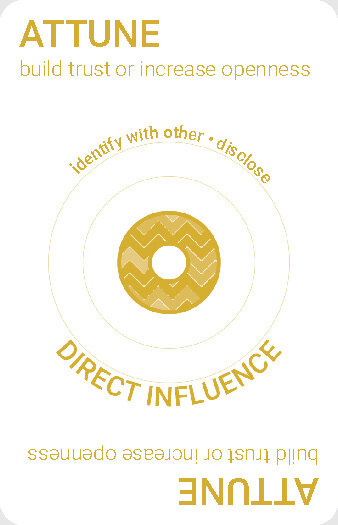
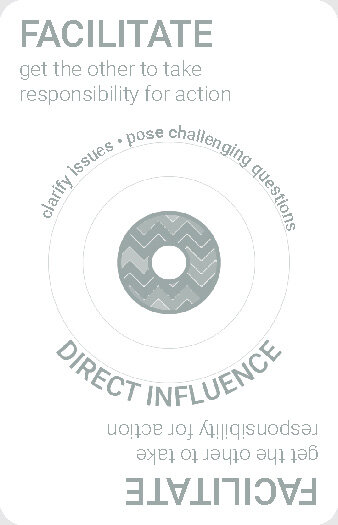
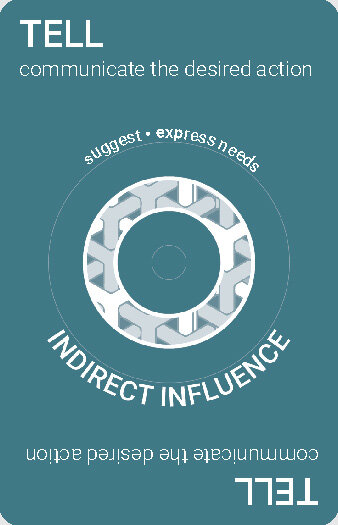
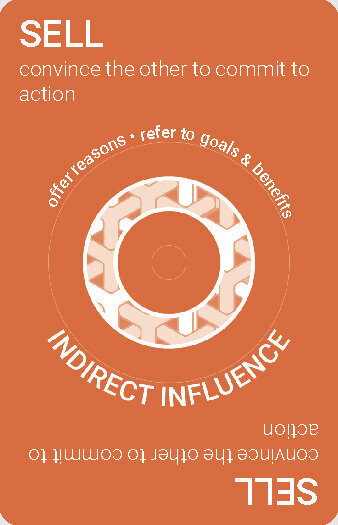
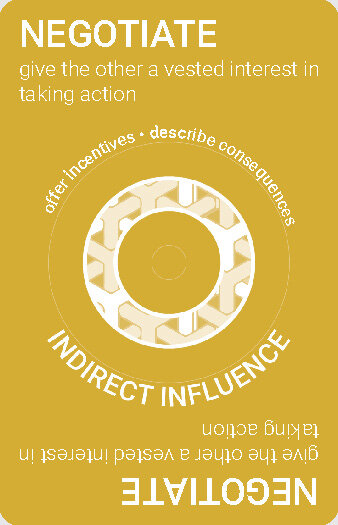

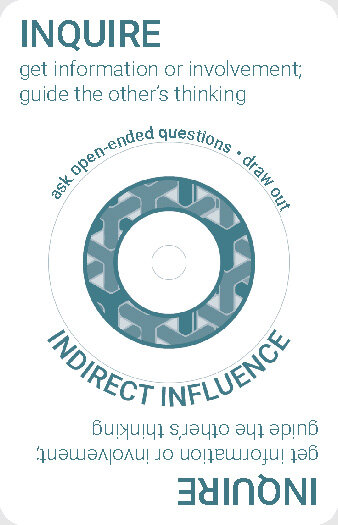
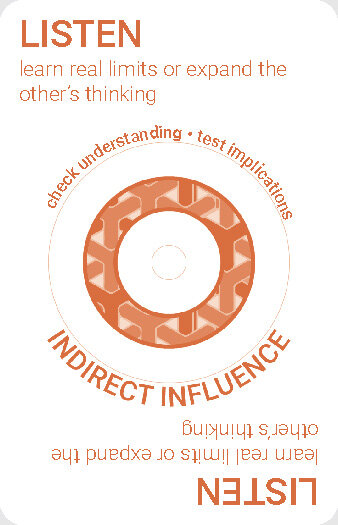
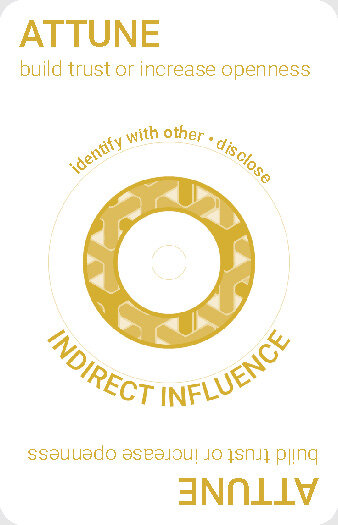

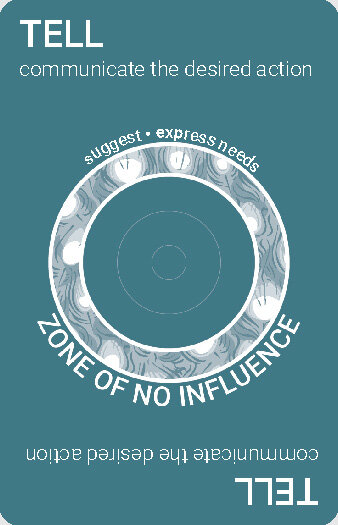
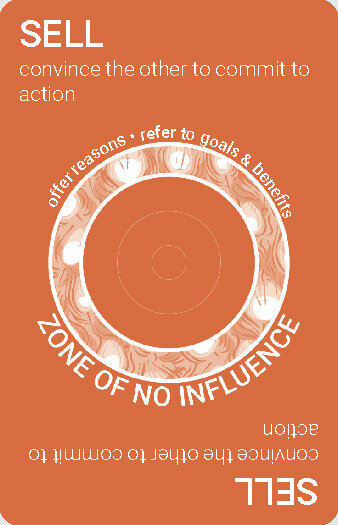
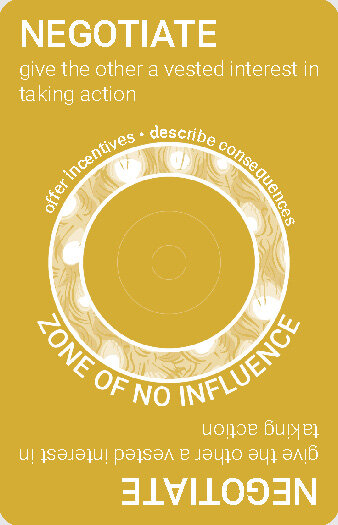
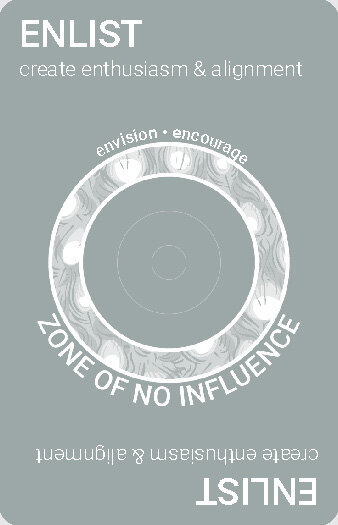
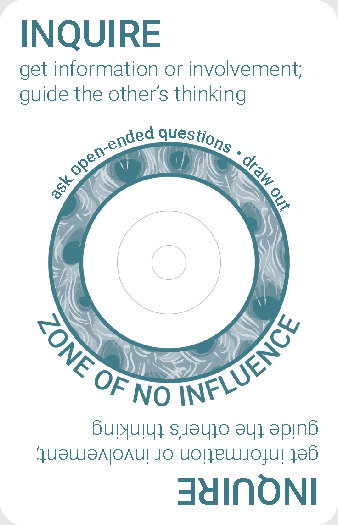
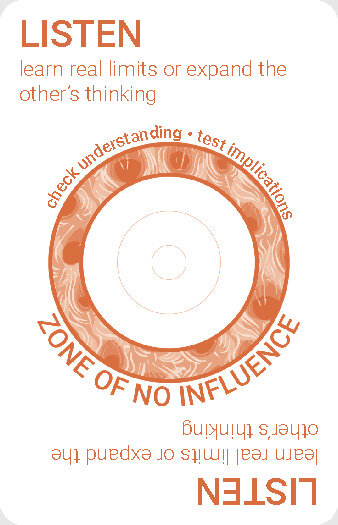
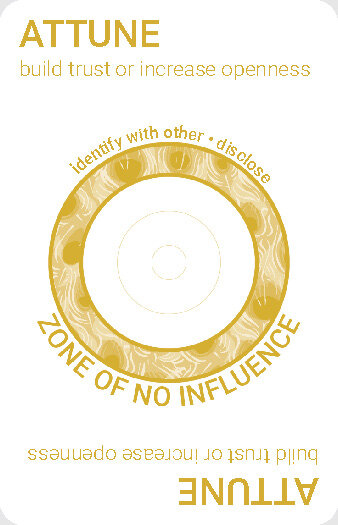
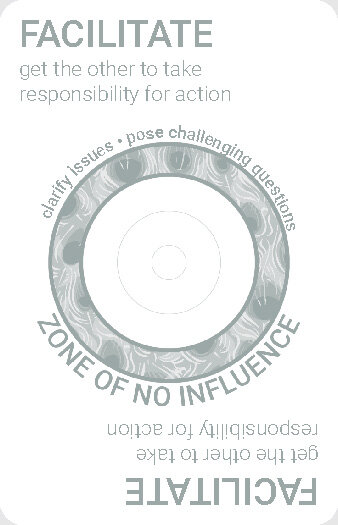
Process
The sketch pictured here, like Barnes’ book, organizes tactics of influence into two separate groups that act as complementary pairs: expressive tactics and receptive tactics. Each card has a unique combination of tactic and zone of influence.
These tactics include:
expressive tactics: tell, sell, negotiate, enlist
receptive tactics: inquire, listen, attune, and facilitate.
The zones of influence include:
no influence
indirect influence
direct influence, and
control
Design Iterations
The sketches provide some indication of graphics that differentiate each unique card. The following gallery of images shows the design progression from the initial sketch and game design to the final prototype and instructions provided below.
Rules
Dealing
To begin the game, the dealer shuffles the cards and deals seven cards, face down, to each player. The remainder of the deck will be left face down for all players to draw from throughout the game.
Players may begin by putting down any pairs or sets on the table. However, players do not have to put any cards down to begin the game. After the game begins, a player can only put pairs or sets on the table during their turn.
Play
Each player will take a turn to ask another player for a type of card.
Player 1 may:
ask “do you have any sell cards?” OR “do you have any direct influence cards?”
OR choose to draw a card from the deck
OR play a swap card. This will allow player 1 to swap one of their pairs on the table with anyone else’s.
In response, player 2 can:
place any of their cards that match this criteria, face down, on the table for player 1 to view (if player 2 does not have any cards that match the criteria they may direct player 1 to “MAKE IT HAPPEN” and pick up one card from the deck)
OR play a block card. This will be the end of player 1’s turn.
Player 1 then can:
keep ONE card from player 2 that they would like to keep in their own hand.
AND place any pairs and/or sets on the table
End & Points
The game ends when there are no cards left to draw from the remainder of the deck. Players may only collect points for pairs or sets that are on the table at the end of the game. Any cards remaining in their hands will be counted against them.
Players gain points for pairs or sets on the table:
4 points per each control card
3 points per each direct influence card
2 points per each indirect influence card
1 point per each zone of no influence card
Players will lose 2 points for each remaining card in their hands.
Results & Reflections
Upon reflection of the design, there are several opportunities for further development. Some potential features to explore include:
expanding library of cards—players could also learn strategies for leadership and business managment, and
introducing an online version—players could enjoy the game in remote scenarios.
Next Steps
To bring this project forward, next steps include:
Interviewing potential users—colleagues and friends
Testing and conducting usability assessments with paper prototypes and potential users
Iterating a paper prototypes based on testing feedback






